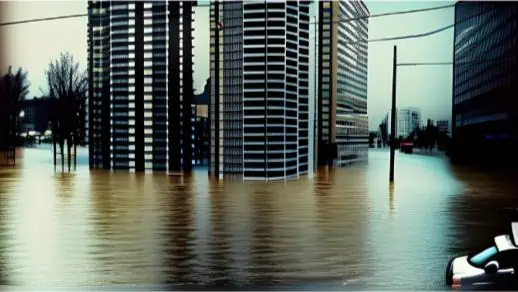Introduction
Climate change has become an undeniable reality, dramatically reshaping our world. Among its most alarming consequences is the growing frequency and intensity of floods. In this article, we will explore the critical issue of climate change and its direct correlation with the surge in flooding events.
Understanding Climate Change
Climate change, primarily driven by greenhouse gas emissions such as carbon dioxide (CO2) and methane (CH4), has disrupted the Earth’s climate system. This disruption has resulted in a series of catastrophic events, including soaring global temperatures, melting polar ice caps, and increasingly extreme weather patterns.
Floods: The Rising Threat
Floods represent one of the most visible and destructive outcomes of climate change. These inundations, once rare, are now becoming a distressingly common occurrence across the globe. Several factors contribute to this growing menace:
Increased Precipitation: Rising global temperatures enable the atmosphere to hold more moisture, leading to heavier and more protracted rainfall events. This intensified precipitation swells rivers and submerges low-lying areas.
Rapid Snowmelt: Elevated temperatures also hasten the thawing of snow in mountainous regions, causing an abrupt influx of water into rivers, overwhelming communities downstream, and resulting in devastating floods.
Sea Level Rise: The melting polar ice caps and the thermal expansion of seawater due to warming have led to a steady rise in sea levels. Coastal regions are becoming increasingly vulnerable to storm surges and saltwater intrusion during high tide events, causing more frequent and damaging floods.
The Human Toll
The impacts of these floods extend well beyond immediate property and infrastructure damage. Lives are at risk, with marginalised communities often suffering the most. Floods can lead to loss of life, displacement, and long-term health consequences for survivors.
Environmental Consequences
The ecological aftermath of climate-induced flooding is profound. Floodwaters can inundate farmlands, contaminating soil and causing agricultural losses. Additionally, aquatic ecosystems are severely affected as floodwaters carry pollutants into rivers and lakes, disrupting these fragile environments.
Mitigation and Adaptation
Addressing the climate change-flood nexus demands a multifaceted approach:
Emission Reduction: To combat climate change at its core, countries must commit to slashing greenhouse gas emissions. This entails transitioning to renewable energy sources, adopting energy-efficient technologies, and reevaluating industrial practices.
Flood Preparedness: Communities in flood-prone areas must invest in early warning systems, flood defences, and resilient infrastructure. This includes constructing homes and structures on higher ground, building levees and floodwalls, and using flood-resistant building materials.
Ecosystem Restoration: Protecting and rehabilitating natural ecosystems such as wetlands and forests can mitigate flooding by absorbing excess water and stabilising riverbanks.
International Cooperation: Climate change and flooding are global challenges necessitating international collaboration. Nations must work together to share knowledge, technologies, and resources to effectively combat these crises.
Conclusion
The relationship between climate change and the surge in floods is undeniable. As global temperatures continue to rise, the risk of catastrophic flooding events grows exponentially. Urgent action is imperative. By reducing greenhouse gas emissions, bolstering flood preparedness, restoring ecosystems, and fostering international cooperation, we can work toward a more resilient and sustainable future, one where the threat of devastating floods is significantly diminished.
